Art Fairs
See How One Artist Harnessed the Power of Augmented Reality to Make a Series of Quirky Self-Portraits (Hint: It Involves Bunny Ears)
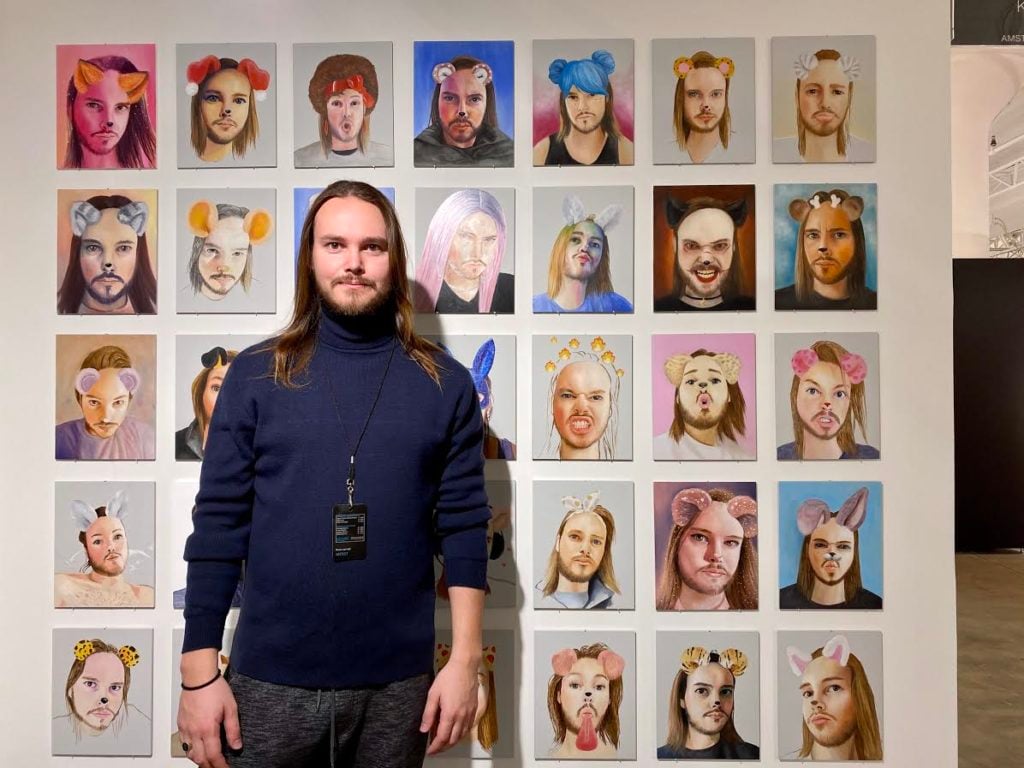

Sarah Cascone

It was a disastrous 2019 for VOLTA New York, with structural problems at Pier 94 leading the Armory Show to unceremoniously boot its younger sister fair from its venue at Pier 90. Cancelling the fair left dealers scrambling to find space across the city to show their work, including at SCOPE at Art on Paper, and a “Plan B” exhibition hosted by David Zwirner.
Now under new ownership, Ramsay Fairs, and a new director, Kamiar Maleki, the fair also has new digs a few blocks south of the piers, on the other side of the West Side Highway, at Metropolitan Pavilion West.
After last year’s debacle, the majority of dealers did not return, with the number of exhibitors dropping from 78 to 53. But Kaoru Yamamoto, of Amsterdam’s Kyas Art Salon, wasn’t scared away after her experiences at Plan B and Scope. “I was worried because of the coronavirus!” she exclaimed.
Her two-person booth is one of VOLTA’s highlights. Inbar Hasson is showing her monumental nine-foot-tall “Planted” canvases, in which she’s recycled old works, creating new scenes around the smaller canvases. “I invent a narrative for them,” she told Artnet News of the $12,500 to $13,000 paintings. “It’s like being the director you have the actors, but you don’t have the script.”
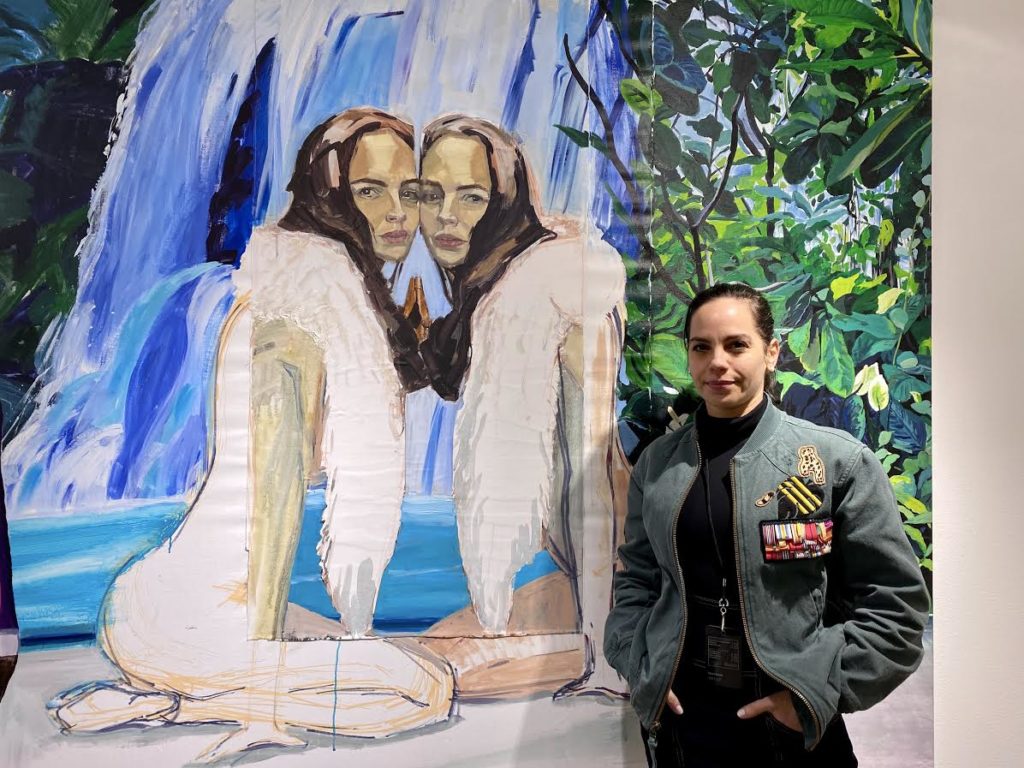
Inbar Hasson with her painting Eve & Eve (2018) at Kyas Art Salon’s VOLTA booth. Photo by Sarah Cascone.
She’s been paired with Rinus van Hall, who is showing a diminutive series of self-portraits, each $950. Titled “The Fake Surface,” each work depicts the artist through the lens of a different social media filter.
“I took it as a diary. I made a painting a day,” Van Hall told Artnet News, noting that the piece is more than a simple commentary on selfie culture. As the digital technology that allows us to transform our own appearance becomes more integrated in our daily lives, glasses or contact lenses will allow us to view an augment reality as we move through our daily lives.

Rinus van Hall with his series “The Fake Surface,” at Kyas Art Salon’s VOLTA booth. Photo by Sarah Cascone.
“Somebody might be putting a filter on top of you,” he warned.
Using Snapchat, Facebook, and Instagram, the Van Hall transformed his visage by adding bunny ears, turning his face into a creepy skull with blackened eye sockets, or making his skin look like shiny plastic. These normally ephemeral images are surprisingly successful translated into classical, realistic portraiture.
“It’s funny to see how the filters themselves also have an effect on how you pose. With a more feminine filter my expressions were completely different.”
Van Hall has made 67 works in the series so far, and he isn’t running out of options. “There is almost a new filter every day which is mind boggling,” he said. “There is a real creative engine behind it, and it’s becoming more open source, so people are making their own filters.”
See more paintings from the series
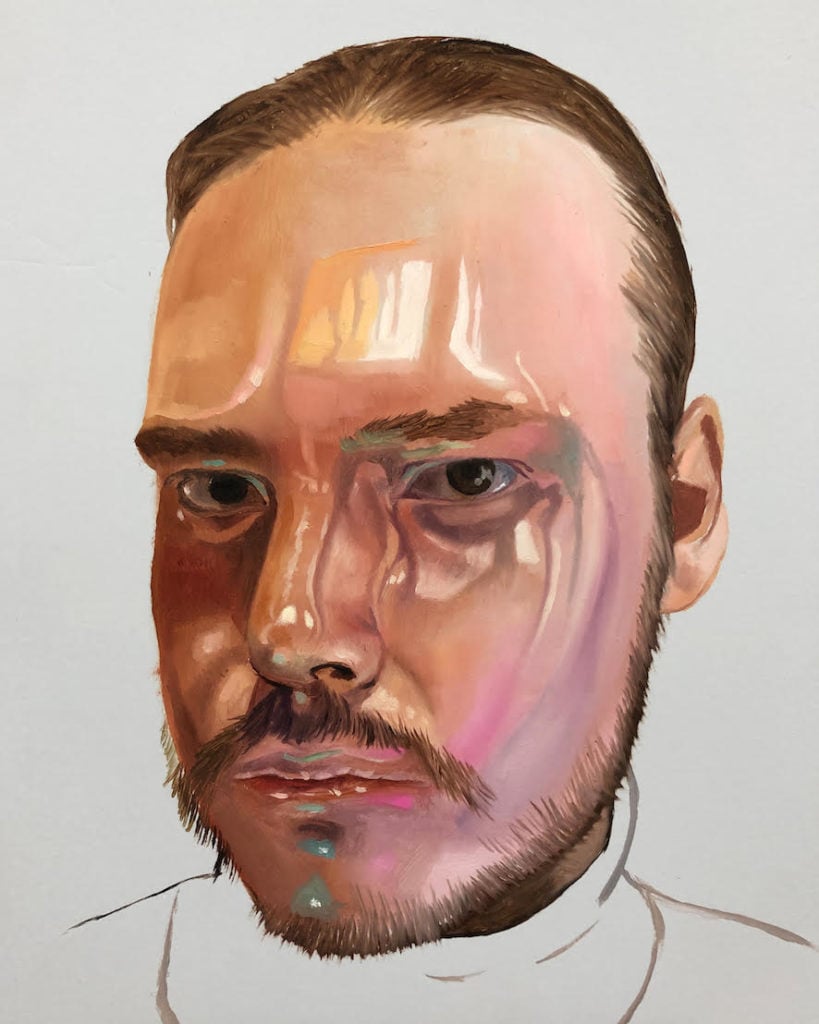
Rinus van Hall, The Fake Surface #64 (2020). Courtesy of Kyas Art Salon.
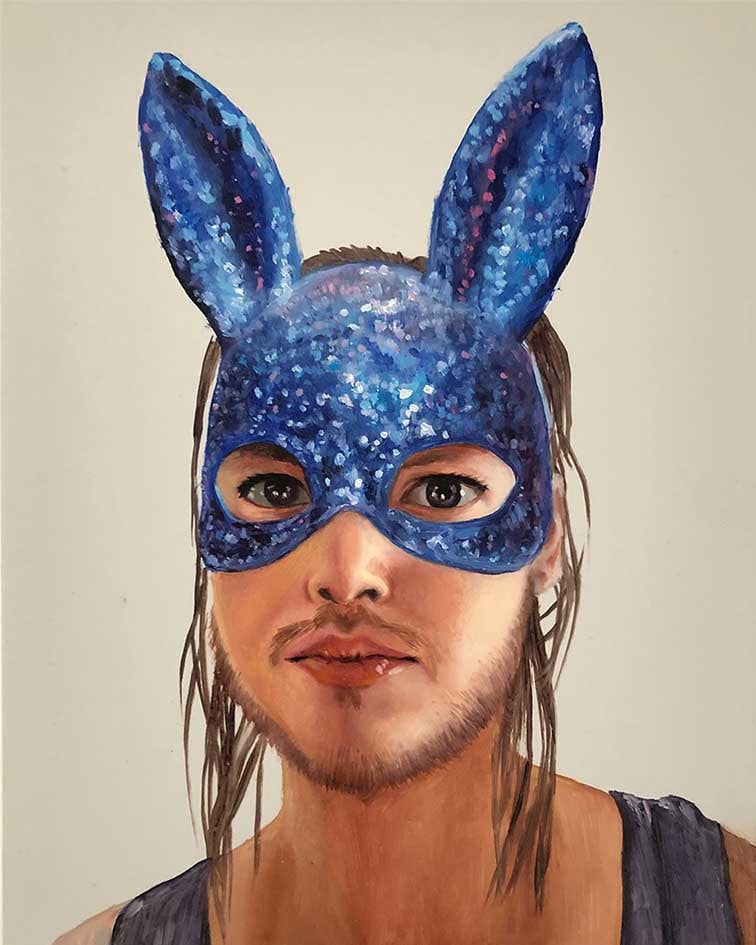
Rinus van Hall, The Fake Surface #2 (2019). Courtesy of Kyas Art Salon.
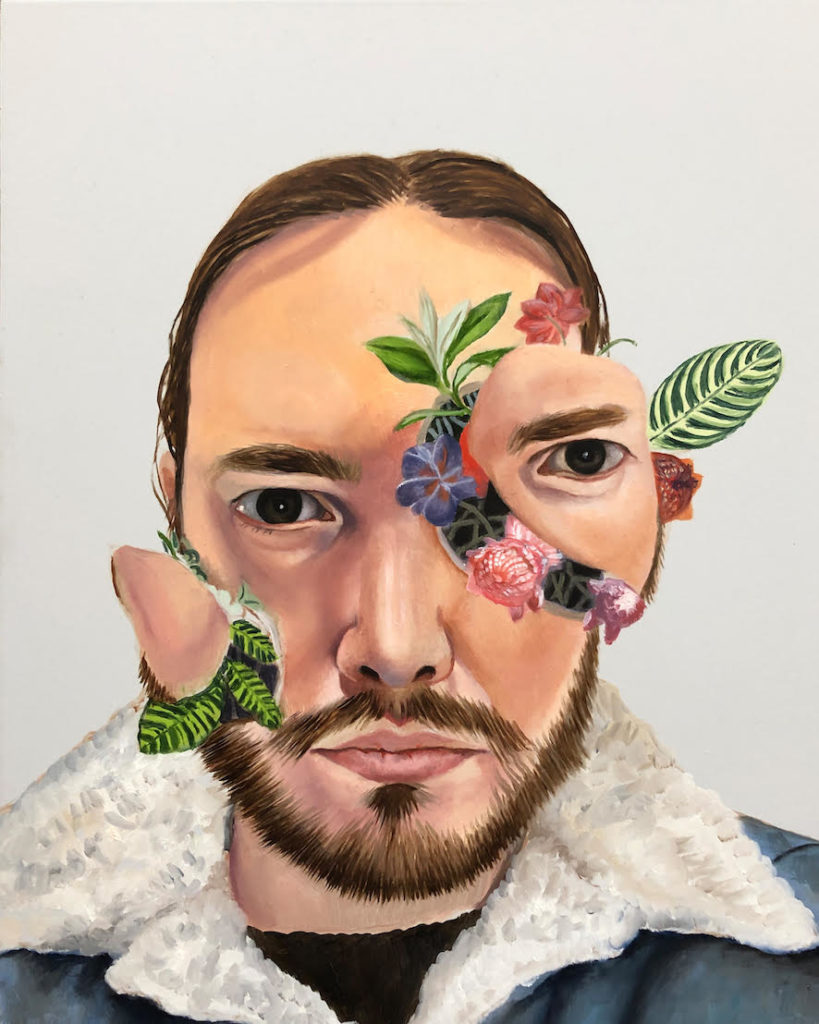
Rinus van Hall, The Fake Surface #61 (2020). Courtesy of Kyas Art Salon.
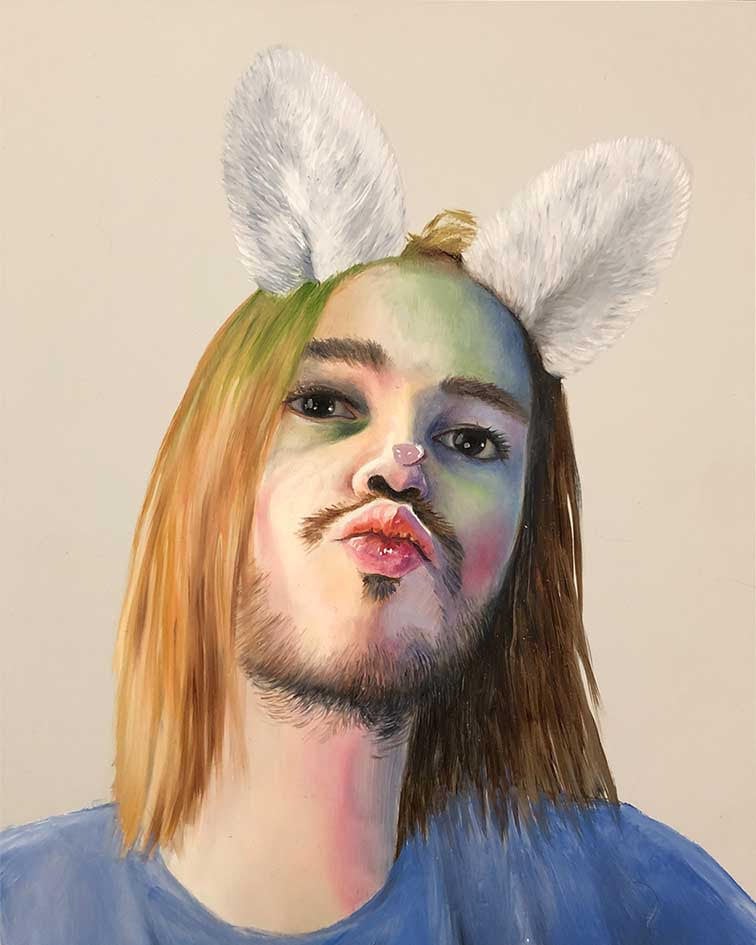
Rinus van Hall, The Fake Surface #1 (2019). Courtesy of Kyas Art Salon.